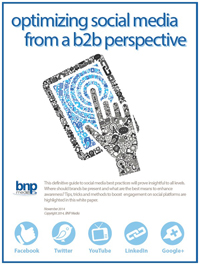Understanding Profitability in a Changed World

Collage from LeksusTuss and lucato/ iStock / Getty Images Plus via Getty Images
A recent article in our local newspaper about evaluating the qualifications of teachers around the turn of the 20th century caught my attention. The writer related some of the questions that were used when assessing candidates for teaching positions in public schools. Here is one of the questions used to assess a potential teacher’s ability in mathematics about 120 years ago:
Suppose I pay 331/48 cents per bushel for carting my wheat to the mill, the miller takes 1/16 of a cent for grinding, it takes 41/2 bushels of wheat to make a barrel of flour, I pay 25 cents each for barrels and $1.25 per barrel for carrying the flour to market where my agent sells 60 barrels for $367.50, out of which he takes 25 cents per barrel for his services. What do I receive per bushel for my wheat?
It sounds like a bit of a brain teaser, and I’m sure some of you are wondering, “What the heck does this have to do with my service business in 2021?”
The article got me thinking about how well we really understand the profitability of our business. You’ve probably recently gone through the process of putting together your business plan for 2021. If so, then in many cases, one of your areas of focus is on improving profitability. When doing so, here are some of the questions you should have considered:
- How do we know it’s possible to increase our profits?
- What benchmarks or standards are we using to determine what our profitability could be?
- How have we gone about assessing where the opportunities for improvement lie?
- Do we understand our profitability by service or product line to the point that we can determine whether some parts of our business are profitable and may be subsidizing others that are not?
- How much improvement is possible, and what should our targets in specific areas be for 2021?
- Have we done enough of a deep dive to know which cost items offer the most potential and are the areas where we should focus our efforts?

Image from IvelinRadkov/ iStock / Getty Images Plus via Getty Images
Chances are good that even if you considered some of these questions, you probably didn’t consider all of them. You may be wondering where you should even start! Allow me to offer some suggestions:
- Start with the cost of sales (COGS) items that represent the biggest portion of your revenue:
Direct Labor is typically the largest single cost item. Subcontracting—an alternative to using in-house labor—may also be significant, especially if you are in the rebuild or construction business. Materials and vehicles, along with all related costs like maintenance, fuel, and insurance, likely round out the top four.
- Identify industry benchmarks for total COGS and targets for the above four items (expressed as a percent of total revenue) based on the lines of service you offer.
- Compare your performance to the benchmarks and see where the gaps are the largest.
- For your overhead or fixed expenses, start with the total amount, again expressed as a percent of total revenue. If the answer is greater than 30%, there is opportunity to either shrink your fixed costs or you may have an organization structure that is scaled to support a higher level of revenue.
As revenue grows, if you maintain the same number of overhead staff—owners, managers, accountants, salespeople, etc.—the total cost of these positions will represent a smaller percentage of your total revenue.
A note of caution: Be careful not to misinterpret what I am saying. DO NOT think that you can simply “grow your way” to profitability. You must manage both your COGS and overhead costs at all times.

Image from MarioGuti/ iStock / Getty Images Plus via Getty Images
- Marketing is an overhead cost that is critical to maintain. This is one where some “inverse logic” applies. In times of reduced profitability, do not give in to the temptation to cut investments in sales or marketing. While doing so might result in a short-term boost in profits, it will likely derail your ability to grow your business in the longer term.
Typically, the total of all sales and marketing costs—including business development reps, their expenses, website maintenance, advertising, printing, and costs for other marketing materials and event sponsorships should total 7-10% of total revenue. Smaller, startup businesses that are experiencing rapid growth will likely have a higher spend. Larger, well-established companies may get that percentage down to 5-7% of revenue.
The above questions and guidance are all relevant in a “normal” year under “normal” conditions.
2020 was anything but normal and chances are that at least part of 2021 will follow suit. The COVID-19 pandemic and related effects on specific industries had a significant impact on most companies—some positive, some negative. Be sure to consider the impact that COVID-19 had on your business. Was it positive or negative? As a result, did you make changes to the services you offer or place emphasis on different markets than in the past?
The biggest question all businesses are facing is whether these changes are short-term in nature or are more likely to be permanent. It’s quite possible there are some ways in which business is likely never to return to the way it was.
Your answers to these questions should drive your focus when it comes to maintaining or increasing profitability. If you saw a significant increase in demand for disinfecting and cleaning services, for example, do you think that higher demand will continue in 2021 and beyond? If so, what internal changes should you make in your business to capitalize on that demand shift? Here are some possibilities to consider:
- Investment in equipment and materials.
- Training for technicians and service specialists who deliver services.
- A change in focus for business development to market segments where these services will remain in high demand.
The same thought process applies to services or markets where demand was negatively affected by the pandemic. Is the drop in demand temporary or do you see more permanent changes that mean the shift is likely to last? If longer-lasting effects are expected, think through the following as you consider future sources of revenue and profits:
- Which customer industries or markets no longer justify the investment in marketing and relationship development that you’ve been making?
- Are there more cost-effective, less human-intensive options for reaching and maintaining contact with prospects and customers for some markets?
- Are there ways you can bring more value to existing or new customer groups based on the skills, services, and resources you offer and the changes that have taken place in their industry?

Image from skodonnell/ iStock / Getty Images Plus via Getty Images
The fact is, you may not have the answers to these, and other, questions raised by the changes that have impacted us all over the past 10 months. 2021 may be a year of finding those answers and making decisions about where your business is headed, where to focus, what to stop doing, and where new opportunities offer more promise for profitable growth.
Now, more than ever, it is critical to understand our markets and our customers, what they want and how they want it, how it all impacts our organization’s ability to adapt, refocus, and retrain, and where the best opportunities are for sustained profitable growth. The world has changed and those who are quickest to adapt and react will seize the day.
By the way, I believe the farmer in the 1900-era math question receives $ 0.935 per bushel for their wheat!
Looking for a reprint of this article?
From high-res PDFs to custom plaques, order your copy today!








